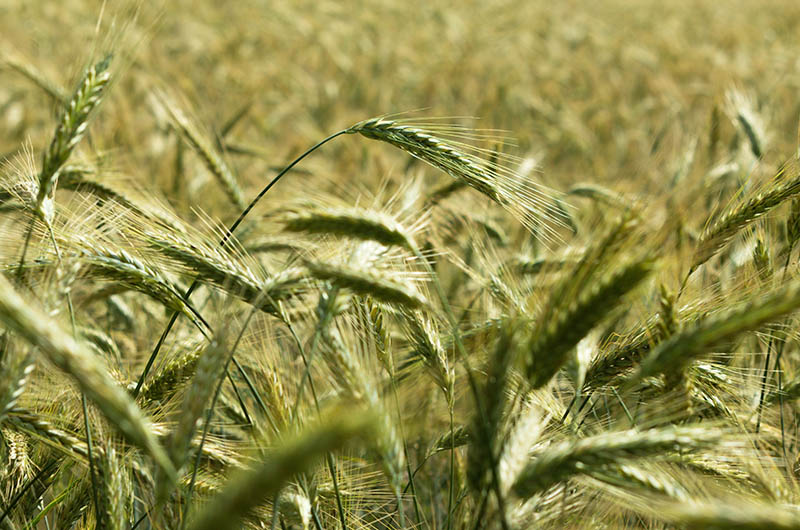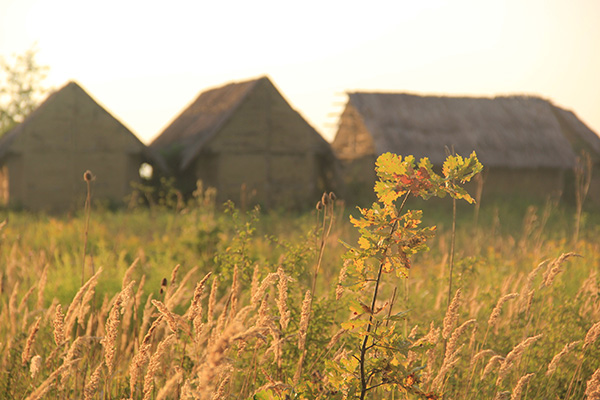
The birth of agriculture
The birth of agriculture is an important event in the history of humanity, just as the mastery of fire or the invention of writing. It marks the entry of peoples into the Neolithic period. Although it seems logical to consider the transition from the hunter-gatherer to the farmer’s way of life a real revolution, the invention of agriculture could only be made during a slow transition spread over several millennia. Where and when was agriculture born? And under what conditions was this birth possible?
Agriculture was not born everywhere at the same time on our planet. Several outbreaks have in fact been evidenced1, obeying variable and sometimes very different chronologies, practiced with more or less success too! Focus on the beginnings of agriculture in Brittany, then on its original birthplace, the ancient Middle East.
Agriculture in Brittany
In Brittany, the beginnings of agriculture can be apprehended thanks to archaeology of course, but also to archaeobotany which takes into account macroscopic remains (wood, seeds) and microscopic (pollen and spores) collected from archaeological sites and wetlands. However, around 6,000 – 5,500 BC, on the southern coasts of Brittany, at the mouth of the Gulf of Morbihan and the Loire, researchers note a decline in forest cover (a diversified oak forest was predominant until then),the appearance of the first rudeal species2 indicators of human activity, as well as the development of exotic plants such as cereals.3
They find the first charred seeds of cereals (wheat and naked barley), but also of legumes like peas, on the archaeological site of Dissignac, at the mouth of the Loire, around 5000 BC.
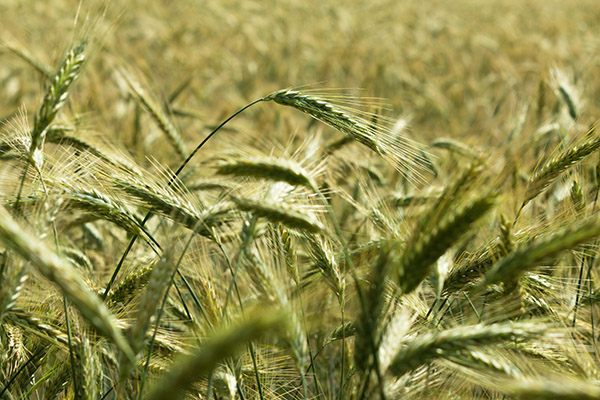
After this period, traces of agricultural economy become undeniable in the South of Brittany. In Northern Brittany, however, the settlement areas of the great megalithic monuments only reveal deforestation actions, cultivation practices and breeding from 4500 to 4000 BC.
Around 4000 – 3500 BC, soil studies reveal the practice of slash-and-burn with characteristic ash beds4. Studies of charred seeds indicate for this period of the Middle Neolithic the cultivation of common wheat hedgehog, naked barley and bean, especially in the Gulf of Morbihan5. However, within the Breton peninsula, the botanical evidence of Neolithic human occupation is more tenuous, with a still dense forest cover that lasts longer, at least until the beginnings of the Second Iron Age (450-25 BC)6.
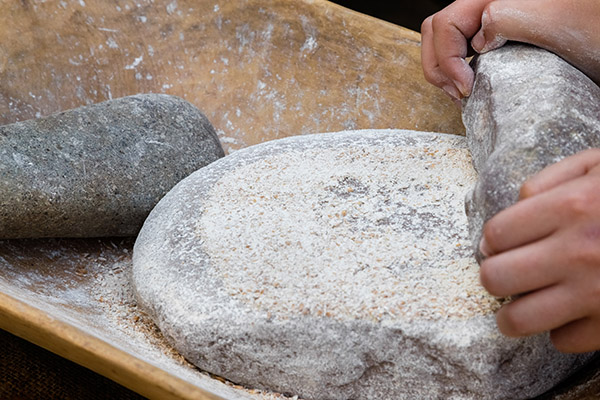
How to identify the beginnings of agriculture?
Several types of clues allow archaeologists to consider the beginnings of agriculture for a given place and period. The use of hard stone tools for cutting cereals is one of them. In fact, siliceous concretions found in plants or remains of fossil plants (phytoliths), leave microscopic scratches on the stone, giving the tool a patina identifiable under the microscope, even after millennia buried.
However, the scratches turns out to be exactly the same whether the plants are wild or domestic, not allowing to distinguish a use of the tool by hunters-gatherers or by farmers. This forces archaeologists to use other clues such as the study of pollen or the remains of ears and seeds to determine the domestication stage of cereals.
The first farmers
The world’s first evidence of agricultural practice is found in Natufian and Khiamian cultures covering part of Israel, present-day Jordan and the Levant between 12,500 and 9,500 BC7. The Natufians left remnants of fixed habitats, markers of at least partial sedentarization. On their sites, silex marked with the grain scratches are also common. It is therefore possible to infer that they harvested ears of cereals… but there is no evidence that they farmed. Indeed, no storage structure has been updated: they may have been just grain pickers.
It was during the following period, called PPNA (Pre-pottery neolithic A, from 9,500 to 8,700 BC), that abundant tools including mortars and grinders, bifaces and sickles were found. In Mureybet (Syria), archaeologists8 find in one of the buildings a division into specialized compartments with nooks and crannies for the reserves, probably attics. At the same time, they note a sharp increase in cereal pollen around the site, mainly barley, starch and engrain, all of which reveal a first form of agriculture.
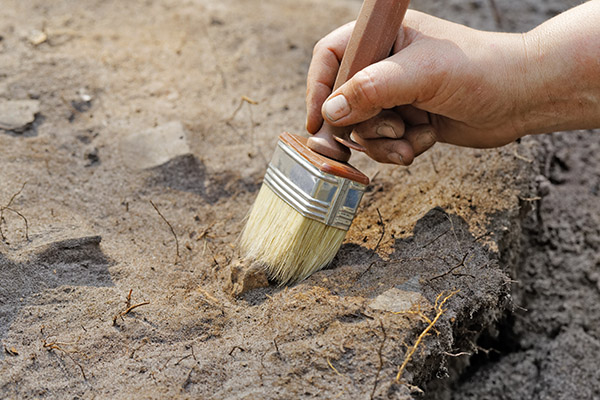
The next period, called PPNB, from 8700 BC, was marked by an expansion of the territories occupied by man and a rapid population growth. Agriculture, still limited to a narrow area, began to move to other regions. It is from this period onwards that cereals can be considered as truly domesticated9. Indeed, on most archaeological sites, the quantity of cereals found suddenly increases, as does that of pollen of opportunistic species (gaillet, poppy, fabaceae, tares, etc., the weedy species of farmers). Palaeobotanists also observe that species, wild or domesticated, now differ significantly. Domestic cereals have lost their ability to disperse their own spikelets (part holding the grain), unlike their wild ancestors.
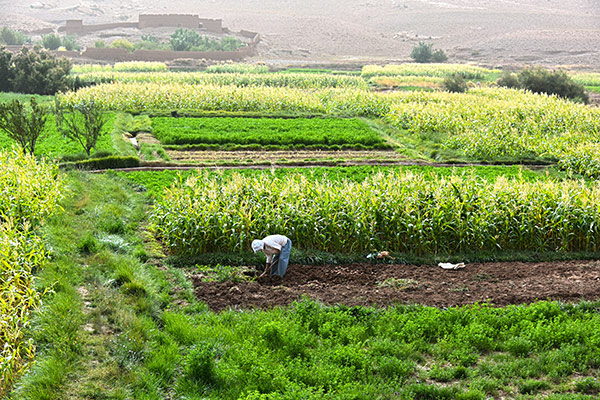
Agriculture from the Middle East to Europe
How has agriculture spread to new territories? The scientific world agrees today that the European Neolithic derives from that of the Middle East. Populations farming and breeding in Anatolia would have settled in Greece with their seeds, livestock and techniques before their descendants moved a little further west over the generations.
Between arriving in Greece and reaching the Atlantic coast, researchers have calculated that the Neolithic advances about 20 to 30 km per generation. During this period, few new plants of European origin were cultivated: some fruit trees such as chestnut and vegetables such as cabbage.
[1] Harlan J.R., 1987. Les plantes cultivées et l’homme. Coéd. Agence de coopération culturelle et technique, Conseil international de la langue française et PUF, 414 p.
[2] Les plantes rudéales sont celles qui poussent spontanément dans un milieu anthropisé, c’est-à-dire modifié de fait de l’activité ou de la présence humaine.
[3] VISSET L., L’HELGOUACH J. et BERNARD J., 1996. La tourbière submergée de la pointe cle Kerpenhir à Locmariaquer (Morbihan), étude environnementale et mise en évidence de déforestations et de pratiques agricoles néolithiques, Rev. Archéol. Ouest, 13: 79-87 et VISSET L., CYPRIEN A.-L., CARCAUD N., OUGUERRAM A., BARBIER D. et BERNARD J. 2002, Les prémices d’une agriculture diversifiée à la fin du Mésolithique dans le Val de Loire(Loire armoricaine, France), CR. Palevol 1 : 51-58.
[4] A. Gebhardt et D. Marguerie. La transformation du paysage armoricain sous l’influence de l’homme, in : coll. « Le Néolithique au quotidien ». Documents d’Archéologie Française, n°39, Editions Maison Sciences de l’Homme, Paris, p. 19 – 24, 1993.
[5] VISSET L., L’HELGOUACH J. et BERNARD J., 1996. La tourbière submergée de la pointe cle Kerpenhir à Locmariaquer (Morbihan), étude environnementale et mise en évidence de déforestations et de pratiques agricoles néolithiques, Rev. Archéol. Ouest, 13: 79-87
[6] Gebhardt A., Marguerie D., Visset L., Bernard V., Gaudin L., 2007. Des premiers agriculteurs aux bocages armoricains, les données des disciplines paléoenvironnementales, in Bocages et Sociétés, dir A. Antoine et D. Marguerie, PUR, pp 51 à 61.
[7] Cauvin J., 1994. La naissance des divinités, la naissance de l’agriculture, la naissance des symboles au néolithique. CNRS éditions, Paris, 304 p. et Valla F., 2000. La sédentarisation au Proche-Orient : la culture natoufienne. In J. Guilaine (dir.), 2000. Premiers paysans du monde. Naissance des agricultures (ouvrage collectif). Editions Errance, Paris, 320 p.
[8] Cauvin J. 1978. Les premiers villages de Syrie-Palestine, du IXème au VIIème millénaire avant J.C., Collection de la Maison de l’Orient Méditerranéen Ancien n°4, Série Archéologique 3.
[9] Wilcox G., 2000. Nouvelles données sur l’origine de la domestication des plantes au Proche-Orient. In J. Guilaine (dir.), 2000. Premiers paysans du monde. Naissance des agricultures (ouvrage collectif). Editions Errance, Paris, 320 p.
[10] Mazurié de Keroulan K., 2003. Genèse et diffusion de l’agriculture en Europe. Agriculteurs, chasseurs, pasteurs. Errance, Paris, 184 p.
